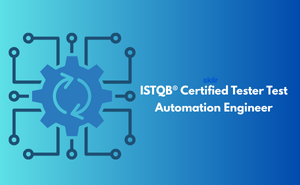👇 CELEBRATE CLOUD SECURITY DAY 👇
00
HOURS
00
MINUTES
00
SECONDS

Credentials that reinforce your career growth and employability.
Start learning immediately with digital materials, no delays.
Practice until you're fully confident, at no additional charge.
Study anytime, anywhere, on laptop, tablet, or smartphone.
Courses and practice exams developed by qualified professionals.
Support available round the clock whenever you need help.
Easy-to-follow content with practice exams and assessments.
Join a global community of professionals advancing their skills.
(Based on 214 reviews)
The Test Automation Engineer (CT-TAE) certification focuses on the design, development, and maintenance of test automation solutions.
Certified Tester Test Automation Engineer (CT-TAE) Exam covers -
ISTQB Certified Tester Test Automation Engineer Study Guide is specially designed by our experts to ease your preparation for the exam.
The Certified Tester Test Automation Engineer (CT-TAE) Exam is aimed at candidates who already have experience in software testing and who wish to further develop their expertise in automation testing.
The syllabus for the exam has been divided into sections and subsections, given as follows-
1. The Test Analyst’s Tasks in the Test Process
2. The Test Analyst’s Tasks in Risk-Based Testing
3. Test Techniques
4. Testing Software Quality Characteristics
5. Reviews
6. Test Tools and Automation